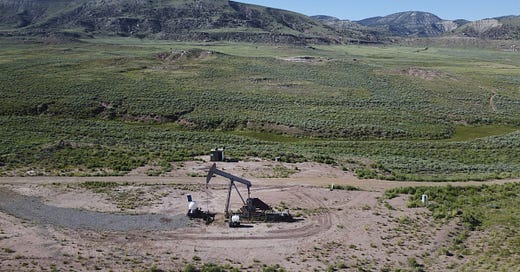A couple decades back, a branch of mathematics called Chaos Theory got its fifteen minutes of fame in popular culture, with the phrase "The Butterfly Effect" capturing our imaginations. The concept wasn't new. It was popularized by mathematician/meterologist Edward Lorenz in 1972. Its peak in the zeitgeist was arguably in 2004 when an eponymous movie was released, and I bet most of you have at least heard the phrase.
Lorenz gave us the layman's explanation by noting that the flapping of a butterfly's wings could influence a tornado. Unfortunately, many misinterpreted that as causing a tornado, when the aphorism was about details such as its exact time of formation, its exact path, and the like. Misinterpretations like this are part-and-parcel of pop culture, and of course they are leveraged by people with agendas who won't let intellectual honesty get in the way of their desired ends. They tell us that everything humans try to do must be studied to the ends of time, lest we somehow topple a precarious ecology into disaster.
I dug into the "green tape" approach to stifling human progress a couple years back, and was heartened by a recent Supreme Court ruling that may finally rein in the scolds, wackadoos, and Luddites that see every bit of technological advancement as a mortal sin against the Earth Mother.
The case, Seven County Infrastructure Coalition vs Eagle County, involves the environmental review process associated with an effort to build an 88 mile long railway to connect an oil-rich region of Utah with the national freight rail network. Six public meetings, 1900 public comments, and a 3600 page Environmental Impact Statement were apparently not enough for some greens, who got the project blocked because the study work didn't, from what I gather, consider the impact on global warming from pumping out and using some more petroleum.
As in, "if we make it easier to extract oil from the Uinta basin, that could accelerate the global warming we are convinced will destroy the planet."
By that measure, any energy-related project could be found environmentally harmful. It's Butterfly Effect applied to climate change.
Yes, I exaggerate, but I believe the sentiment is accurate.
Most of you have heard the term NIMBY, which stands for Not In My Back Yard. I found that term so inadequate to explain the behavior of people who reflexively say "no" that I recast it as BANANA - Build Absolutely Nothing Anywhere Near Anything, back in 2014. The reflex is so strong that its adherents even oppose projects adjacent to their favored green energy sources. Apparently, the materials for wind and solar will just be miracled into existence.
The Court, fortunately, rejected the antis' argument as outside the scope of the National Environmental Policy Act upon which their suit rested, finding that the lower court:
incorrectly interpreted NEPA to require the Board to consider the environmental effects of upstream and downstream projects that are separate in time or place...
This is a much-needed dose of sanity and a ruling that could curtail the power of fanatics to stall projects to death. As I noted in a prior post, "Green Tape," a single fanatic named Marcy Benstock succeeded in halting the rejuvenation of Manhattan's West Side Highway back in the 1980s, leaving New Yorkers to deal with the rotting mess and having to endure patchwork improvements for decades.
Human progress is directly tied to abundant and cheap energy. Human progress is also tied to infrastructure. Both require constant effort. Our energy demands trend ever-upward, and the stuff we build endures constant wear and tear. The notion that every project must be studied to the point of assessing every possible effect is just a cover story for hating humanity. Which, it's clear to me, is the black nugget in the deepest part of green's souls.





This was a huge win. Now Congress should get itself in gear and pass legislation so these type of harassment lawsuits can be dramatically reduced. Grateful you covered it for your readers.